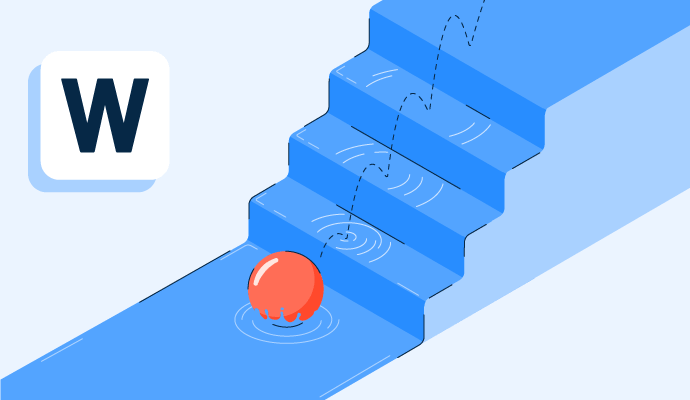What is waterfall?
The waterfall model is the fundamental lifecycle model for software development. It’s the conventional model that acts as a foundation for all other software development lifecycles.
The traditional waterfall paradigm divides the software development lifecycle into several segments. This model considers the possibility of starting a phase after the previous one has ended. The output of the previous phase is taken as input for the next development phase. The development process can be viewed as a waterfall's sequential flow.
Many organizations use project management software to organize and track various activities and tasks in the software development lifecycle.
Phases of the waterfall model
Below is each phase of the waterfall methodology:
- Feasibility analysis: The major objective of this stage is to determine whether the software's development is technically feasible. Understanding any issues and finding solutions are the first steps. The advantages and disadvantages of the various solutions are considered, and the best option is selected. The subsequent phases are carried out in accordance with this option in mind.
- Requirement analysis and description: The goal of this phase is to correctly document and fully comprehend a client's precise requirements. This stage includes two different activities. The first step is understanding the software’s needs and then analyzing needs. The purpose of the analysis is to eliminate inconsistencies and incomplete tasks. The second step is to document the analyzed requirements in a software specification document. This document acts as a contract to the development team and customers.
- Design: This phase translates the software requirement specifications (SRS) into a format that can be coded. It includes the general software architecture as well as high-level and detailed design. This work is documented using a software design document (SDD).
- Coding and unit testing: An appropriate programming language is used to convert the software design into source code during the coding phase. Each designed module is thereby coded. The unit testing step determines whether or not each module is functioning properly.
- Integration and system testing: After each module has been coded and subjected to unit testing, it’s time for project integration and system testing. The system is tested after each integration phase, which involves adding previously designed components to the partially integrated system. Finally, a fully functional system is achieved when all the modules have been successfully integrated and tested. Alpha testing, beta testing, and acceptance testing are the three types of system testing.
- Maintenance: This is the most crucial stage of a software lifecycle. The most time and energy required to produce a complete piece of software is spent on maintenance. Developers use three different kinds of maintenance. Corrective maintenance fixes faults that went undetected throughout the product development process. Perfective maintenance improves the system's functionality. Adaptive maintenance is frequently necessary when transferring software to a new environment, such as when using a new computer platform or operating system.
Benefits of using waterfall
One of the waterfall model's benefits is the ability to departmentalize and exercise control. A product is moved through the stages of the development process model by setting deadlines for each step and following a timetable.
Conceptualization is followed by design, implementation, testing, installation, troubleshooting, and finally, operation and maintenance in the development process. The stages of development are carried out in a specific order, which leads companies to experience many benefits. The waterfall method is:
- Straightforward and simple to use.
- Easy to manage due to its rigidity.
- Designed with specified deliverables and a review process for each stage.
- Easy to monitor because each stage is processed and finished separately.
- Suited for smaller projects that have specifically defined criteria.
Waterfall use cases
The waterfall model is the first software development lifecycle (SDLC) methodology used for software development. It’s an illustration of a sequential model that’s straightforward and easy to use and follow when:
- There are precise and fixed requirements.
- No ambiguous requirements exist.
- Understanding of the technology is solid.
- The project is brief, and the staff is small.
- There is little to no risk.
Waterfall model vs. incremental model
The waterfall model is also called the linear sequential lifecycle model because all of the phases in this model are completed linearly. Software is obtained in this model after the entire coding phase is finished.
The waterfall model has just one cycle. In contrast, the incremental model involves many development cycles broken into smaller modules. Typically, the first module of the incremental model results in creating working software.
The waterfall model requires detailed documentation. However, the incremental model needs manageable documentation. The waterfall model involves considerable risk, while the incremental model carries minimal risk.
The waterfall paradigm moves on to testing only after the development phase finishes. In the incremental model, testing is performed after each phase iteration.
Learn more about the software development lifecycle and adopt the right methodologies for your organization.

Sagar Joshi
Sagar Joshi is a former content marketing specialist at G2 in India. He is an engineer with a keen interest in data analytics and cybersecurity. He writes about topics related to them. You can find him reading books, learning a new language, or playing pool in his free time.




















